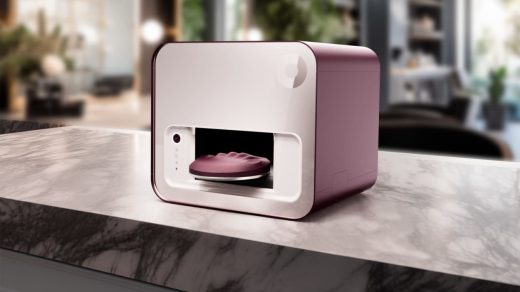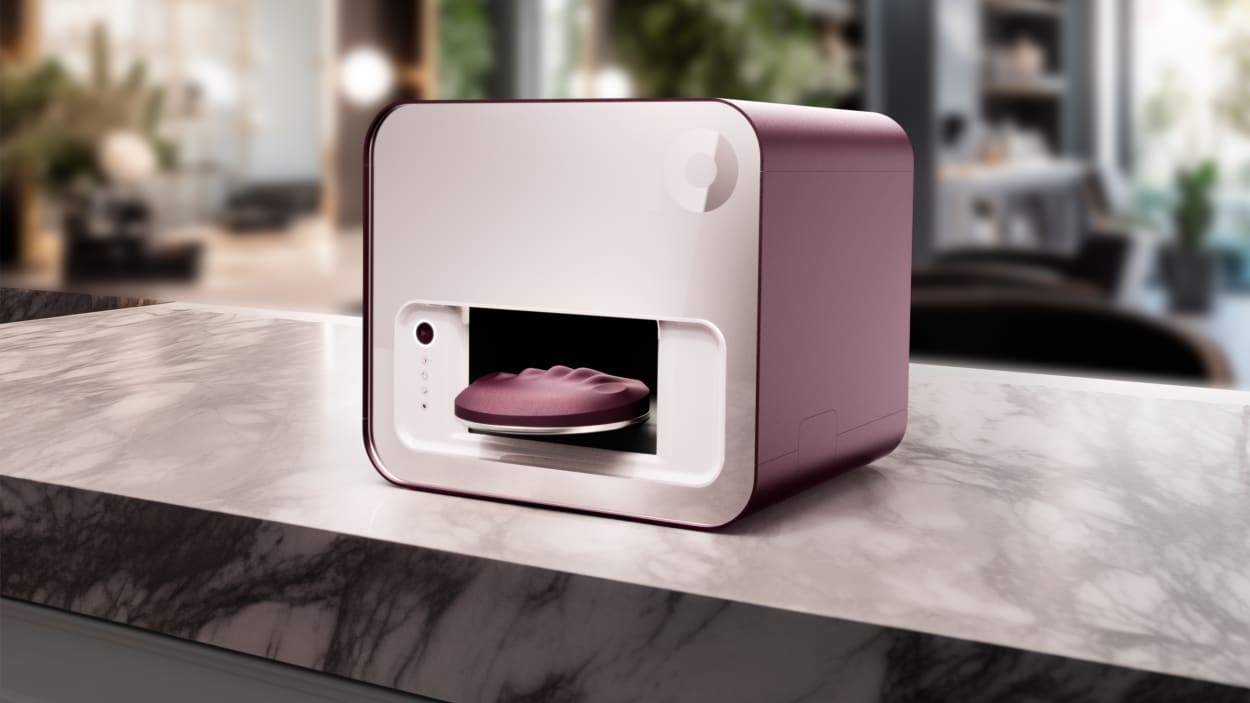These guys built a robot to give you a perfect manicure. Can they win over the $11 billion nail care industry?
I’m one of the 20 million women in the U.S. who get their nails done every month. I like feeling polished and put-together before a big meeting, but the manicure process can feel like a bit of a slog. I need to call the salon to find a time that fits into my schedule, drive to and from the salon, and spend 45 minutes while the technician painstakingly tends to each finger. It’s a ritual that a quarter of all American women partake in, driving the $11 billion nail care industry and 53,000 salons across the country.
But a startup called 10Beauty wants to radically transform the manicure market. Over four years, with a team of 35 engineers and $38 million in equity funding, it developed a robot that can do every part of a traditional manicure: removing old nail polish, shaping the nail, and painting multiple coats.
10Beauty’s machine isn’t designed to directly compete with professional nail technicians—at least not at first. At launch, the company is debuting in locations where consumers don’t typically get their nails done, including high-end hair salons and retailers like Nordstrom and Ulta Beauty, where people can get manicures while shopping. A manicure will cost between $25 and $35, depending on the location, which makes it on par, or slightly less expensive, than a salon manicure. The machines will ship out this summer and be fully operational by the end of the year.
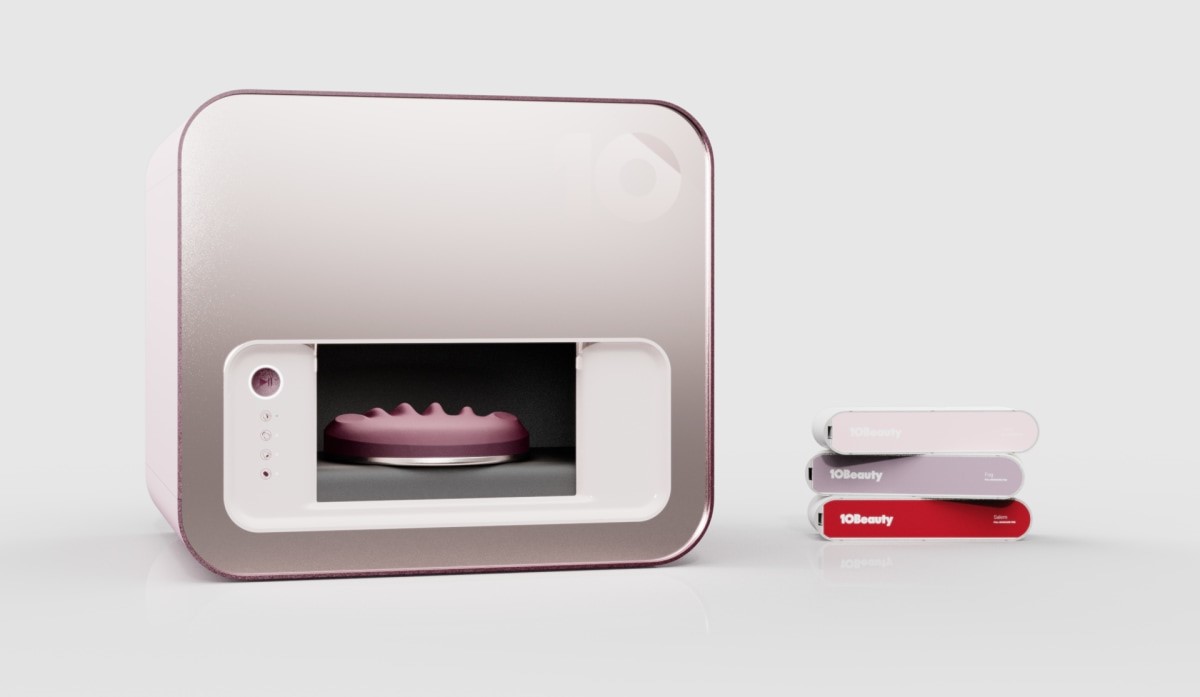
Beyond Nail Painting
10Beauty is the brainchild of Alex Shashou and Justin Effron, friends who met while attending the University of Pennsylvania. After college, they joined forces to launch Alice, a platform that helps hotels better communicate with their guests and staff. The business was successful, scaling to 3,500 hotels, and in 2019 they sold it to Expedia.
As they started brainstorming ideas for their next venture, they decided to aim for something even more ambitious. “What’s our moonshot?” Shashou recalls asking. “When we looked at the beauty industry, we saw that most of the innovation had occurred in products, but services hadn’t evolved much at all, even though technology has improved radically. We decided to figure out if we could completely automate the manicure.”
It took the founders a while to determine whether it was scientifically possible to achieve a completely automated manicure. Since Shahou and Effron don’t have engineering backgrounds, they needed to find a partner who could lead the scientific process. They brought on Chris Casey, a roboticist who had spent two and a half decades building devices like the original Roomba for iRobot.
“I’d never even had a manicure before,” says Casey, who is now the brand’s CTO. “But the challenge of creating a manicure robot was intriguing to me. When I brought this idea to other engineers, the answer I got was that it was probably not impossible to do it.”
The nascent team looked across many industries for ideas. They studied the way car companies paint vehicles. They looked at how 3D printers are able to make minuscule movements. Since filing nails safely was a major concern, they explored devices used for filing babies’ fingernails, like electric trimmers that use a rounded pad that is soft on skin but abrasive to nails.
Then they got to work hiring engineers with specializations in robotics, computer vision, and machine learning, among other disciplines. There’s been a concerted effort to hire women, who now make up almost half of the engineering staff at the company.
“The first prototype was so big you could sit inside it,” Shashou says. “We were just bringing together the different technological components to see how they could all fit together.”
Going from early prototypes to a functional robot would require a lot of capital. Shashou and Effron, who are co-CEOs, set out to assemble a group of investors. They landed capital from Lerer Hippeau as well as well-known firms like Imaginary Ventures, started by Net-a-Porter’s founder, Natalie Massenet, and Red Sea Ventures, an investor in Allbirds and Sweetgreen.
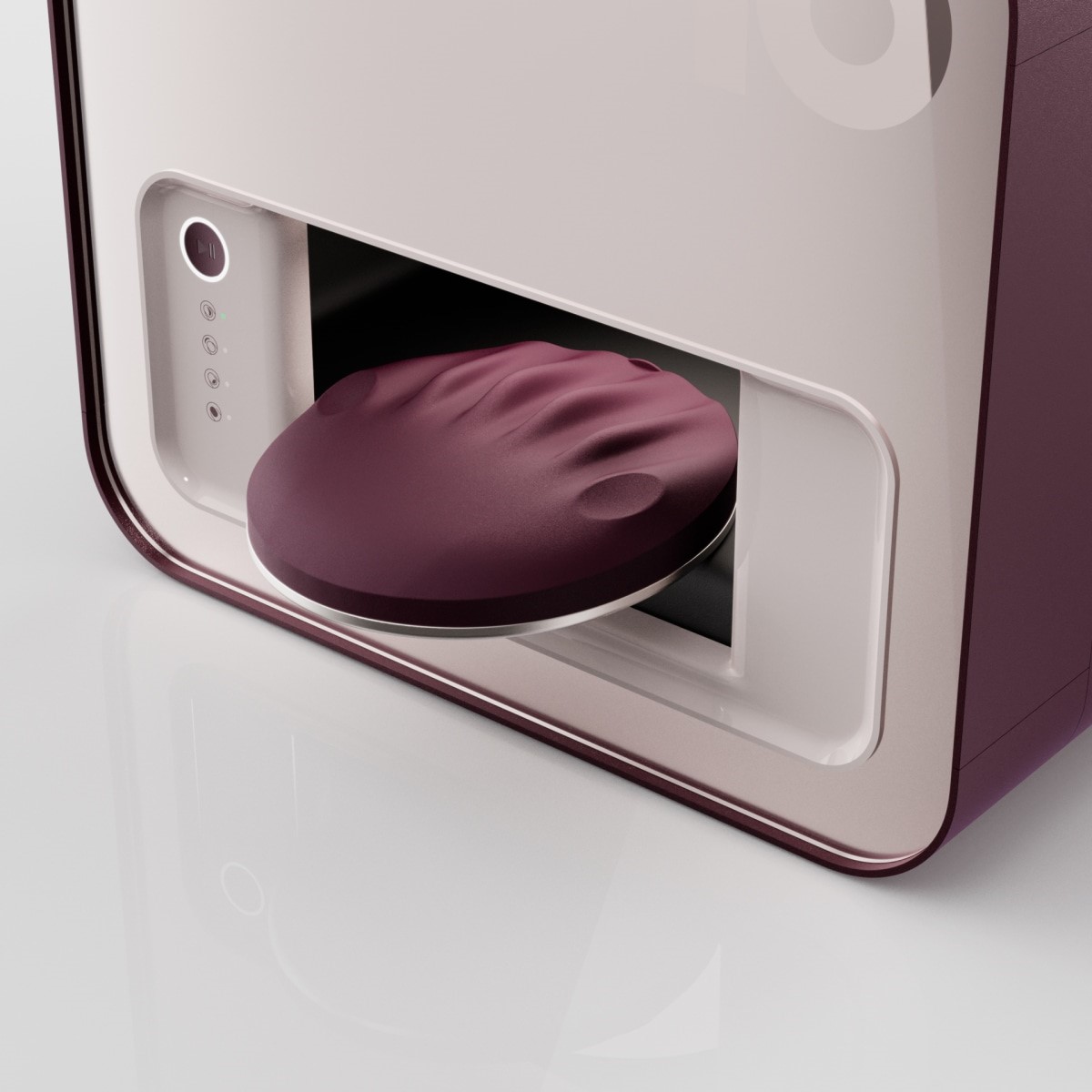
The final machine, called “The 10” is currently in production in Malaysia. It’s the size of a large shoebox and allows a user to comfortably fit their hand inside. I saw a final prototype of the machine at 10Beauty’s offices outside of Boston.
Casey says the machine operates a little like a 3D printer, with a small handle that can hold various tools, including the nail trimmer and polish brush, and move in many directions across the nail. Much like with a Keurig machine, you insert a pod for each new manicure that contains all the materials required, including a sponge filled with nail polish remover and brushes prefilled with the brand’s own line of nontoxic nail polish, made in partnership with a large manufacturer.
As the machine goes through the manicure process, its arm picks up one tool at a time. It begins by removing the old polish with the aforementioned sponge soaked with acetone. It then uses a little cylindrical tool that has no sharp edges called an etched glass file to shape the nails to the customer’s desired specifications.
“The nature of the material means that it is able to file down the nail but it doesn’t hurt the skin,” Casey says. Then the machine pushes back the cuticle with a soft-tipped tool, applies another layer of acetone, then paints and dries the nails. The entire process takes 17 minutes per hand, although it can take less time if, say, you don’t need to remove nail polish or don’t need several coats.
Inside the device, computers are doing complex calculations to determine where to paint on the nails’ surface and exactly how much paint to release onto the brush. Shahou says that the team spent hours speaking to nail technicians and watching them do their work. They took lots of video and images of nails, which they analyzed.
“Nail technicians work intuitively and based on their experiences,” he says. “We translated all of that into numbers, so we can identify the optimal amount of paint to put on the brush and paint to 0.2 millimeters of the nail’s edge.”
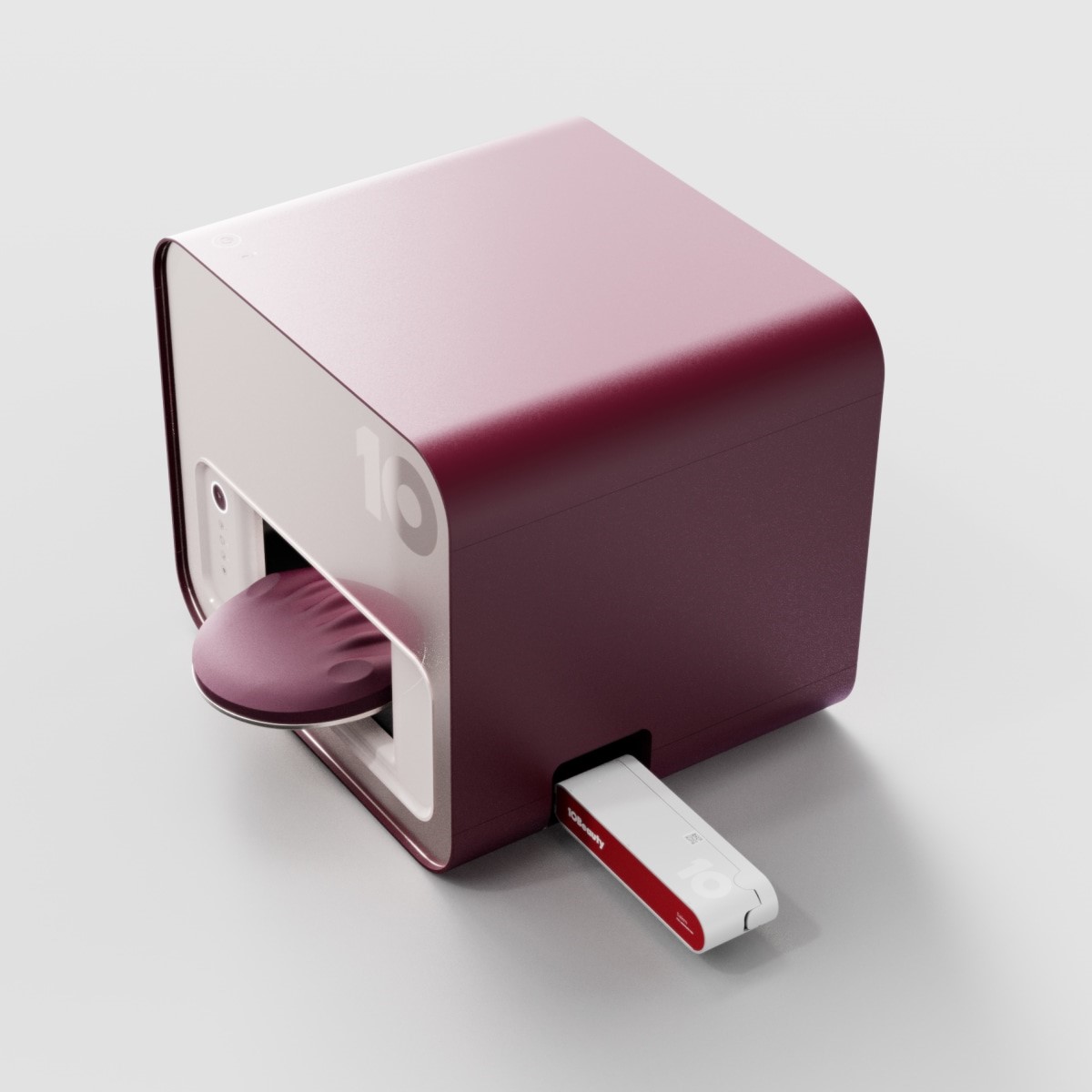
The Roll Out
10Beauty is not the only startup that has attempted to automate a manicure. There are already other machines on the market that use image recognition technology and robotics to paint nails, including Clockwork and Nimble.
But Shashou and Effron wanted to build a machine that could completely replicate the experience and quality of a salon manicure, believing this would be more transformative to the industry, helping to drive it forward. But this meant spending more time and money tackling complex tasks, like shaping nails safely.
Ben Lerer, founder of the VC firm Lerer Hippeau that has invested in companies like Glossier, Casper, and Mirror, decided to invest in 10Beauty because he believed solving these technological hurdles would set the company apart. “There are other companies that have taken half-baked slings at this,” Lerer says. “But they won’t actually give you a full manicure. 10Beauty’s founders are stubbornly focused on making this a reality and they now have protected IP that will allow them to own this category.”
Retailer Ulta Beauty also decided to pour capital into the startup through its investment arm, Prisma Ventures. Agustina Sartori, who runs Prisma Ventures, believes the machines provide unprecedented convenience because they can be used in places like hotels and department stores, where women are already spending time. “We were initially drawn to 10Beauty’s groundbreaking technology,” she says. “Beyond a precise manicure experience, the concept will allow users to seamlessly integrate nail care into their busy lives, which is something we know is highly valuable to today’s consumer.”
Initially, Shashou and Effron planned to create personal machines that people could use at home. But as they began building the machine and studying the market, it occurred to them that it would take time to convince consumers to change their behavior and pivot away from going to a salon. On the other hand, their market research found that 98% of women wished they could get their nails done at their hair salon. And yet only 5% of hair salons offer manicures. “It’s very expensive for them to hire a nail technician to provide this additional service,” Shashou says.
10Beauty is now launching as a business-to-business operation. They’ve already partnered with dozens of high-end hair salons who will rent the machine and order the pods customers use. Customers can have their nails done during their hair appointment, saving them time.

But there are many other places where it makes sense for people to get manicures, such as at a hotel before a work event or a wedding; at the gym after a workout; or while out shopping. 10Beauty has already partnered with hotel chains and several large retailers in addition to Ulta Beauty and Nordstrom. The product is expected to be available at 1,000 locations this fall, representing the potential for some $13 million in revenue in the first year of business.
“Launching 10Beauty is another way we can provide newness and excitement for our customers while adding another convenient service to our in-store shopping experience,” says Debbi Hartley-Triesch, Nordstrom’s executive vice president and general merchandise manager of beauty, accessories, and home. “While we currently provide manicure services in some of our stores, we see this partnership with 10Beauty as another opportunity to offer our customers a new kind of quick and convenient service.”
Shashou says that over time, when consumers have had a chance to get to know the technology, 10Beauty will begin making personal machines for home use. This could potentially displace the nearly 200,000 nail technicians who work in the United States. It’s a similar story to how robots are increasingly replacing humans in warehouses. It’s unclear what this will mean for the nail tech workforce: They may find work doing more complex tasks in the beauty sector or find work outside the industry altogether.
Shashou hopes that 10Beauty will ultimately be about much more than just manicures. The goal is to deploy the team of engineers to automate many other beauty services that up until now have been done by humans, including, perhaps, hair services. “We didn’t know if we could automate the manicure until we tried it,” Shashou says. “I’m certain there are other services we could automate if given the chance.”
(12)

